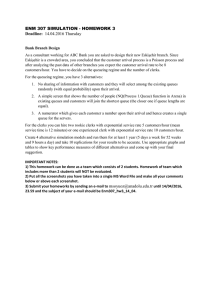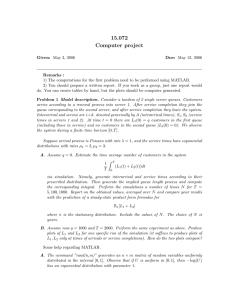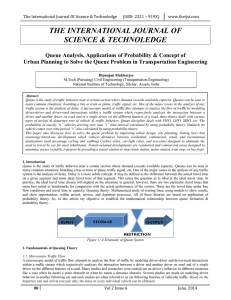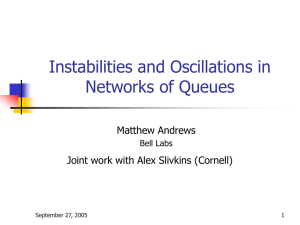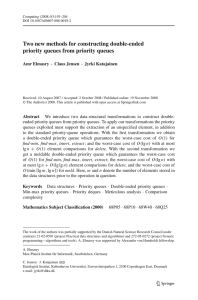ma.doc
advertisement
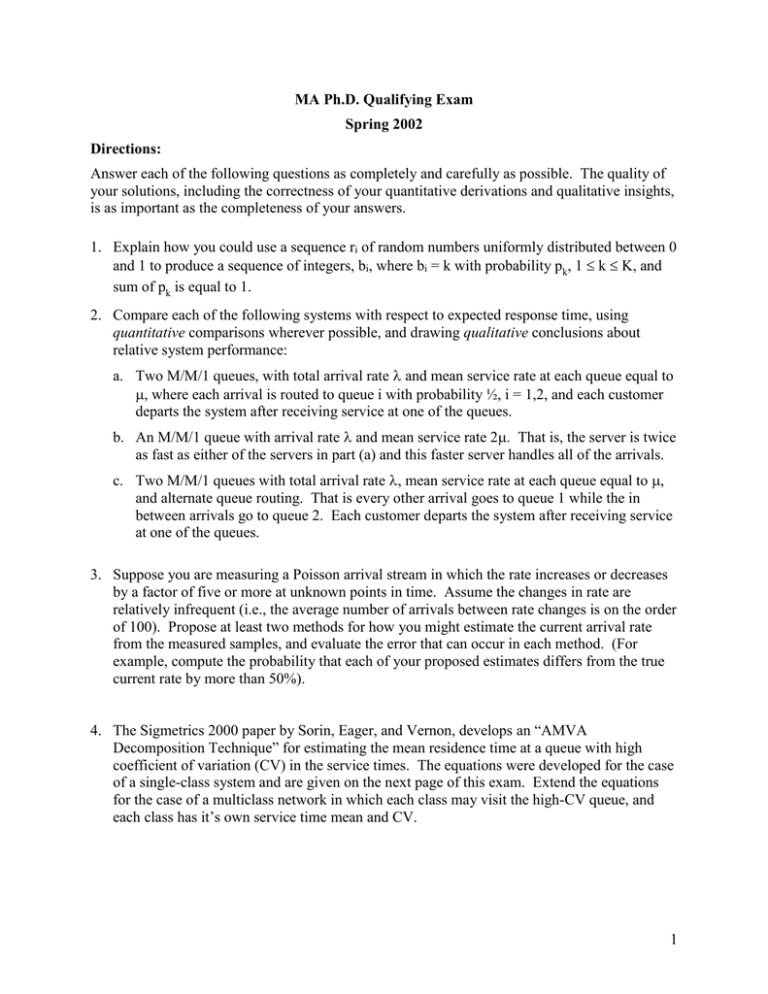
MA Ph.D. Qualifying Exam Spring 2002 Directions: Answer each of the following questions as completely and carefully as possible. The quality of your solutions, including the correctness of your quantitative derivations and qualitative insights, is as important as the completeness of your answers. 1. Explain how you could use a sequence ri of random numbers uniformly distributed between 0 and 1 to produce a sequence of integers, bi, where bi = k with probability pk, 1 k K, and sum of pk is equal to 1. 2. Compare each of the following systems with respect to expected response time, using quantitative comparisons wherever possible, and drawing qualitative conclusions about relative system performance: a. Two M/M/1 queues, with total arrival rate and mean service rate at each queue equal to , where each arrival is routed to queue i with probability ½, i = 1,2, and each customer departs the system after receiving service at one of the queues. b. An M/M/1 queue with arrival rate and mean service rate 2. That is, the server is twice as fast as either of the servers in part (a) and this faster server handles all of the arrivals. c. Two M/M/1 queues with total arrival rate , mean service rate at each queue equal to , and alternate queue routing. That is every other arrival goes to queue 1 while the in between arrivals go to queue 2. Each customer departs the system after receiving service at one of the queues. 3. Suppose you are measuring a Poisson arrival stream in which the rate increases or decreases by a factor of five or more at unknown points in time. Assume the changes in rate are relatively infrequent (i.e., the average number of arrivals between rate changes is on the order of 100). Propose at least two methods for how you might estimate the current arrival rate from the measured samples, and evaluate the error that can occur in each method. (For example, compute the probability that each of your proposed estimates differs from the true current rate by more than 50%). 4. The Sigmetrics 2000 paper by Sorin, Eager, and Vernon, develops an “AMVA Decomposition Technique” for estimating the mean residence time at a queue with high coefficient of variation (CV) in the service times. The equations were developed for the case of a single-class system and are given on the next page of this exam. Extend the equations for the case of a multiclass network in which each class may visit the high-CV queue, and each class has it’s own service time mean and CV. 1 AMVA-Decomp equations for the queue with high CV in a single-class network: Let service times at the high-CV center be modeled by a 2-stage hyperexponential distribution, with parameters p, a, and b. With probability p, a given customer’s service time is exponential with mean a, which probability 1 – p the service time is exponential with mean b. Let R denote the mean total residence time at the high-CV center and Rother denote the mean total residence time in the rest of the queueing network. Then, R = p R a + ( 1 – p ) Rb where Ra = a 1 Rb = b 1 N 1 Q a N N 1 Q b N R Qa = N a R R a R Qb = N b R R b other other 2
